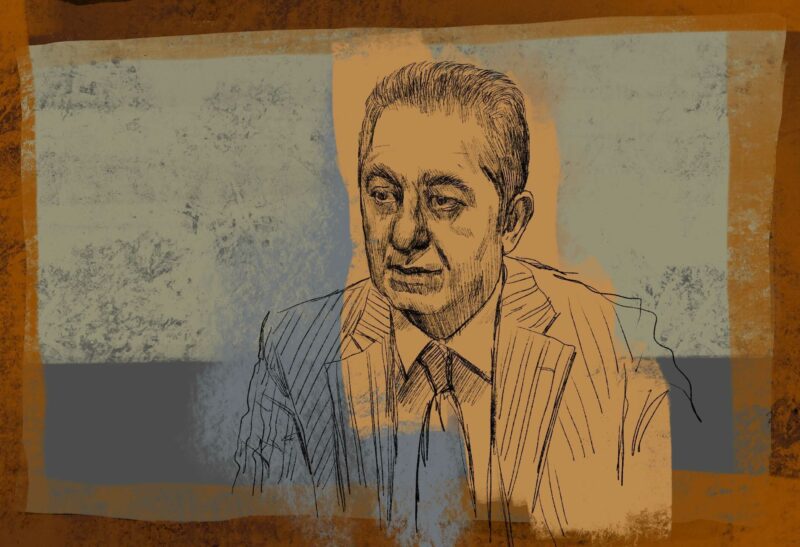Gazprom recently announced it had triumphant record success on the EU market in 2016: the share of Russian gas in European consumption rose to 34%.
In the post-Soviet space, the Russian gas monopoly’s position has weakened, however: the supply to the countries of the so-called ‘near abroad’ – the CIS and Baltic countries – was reduced by 16.5%, and has fallen two-fold over the past decade.
However, it’s clearly still too early to bid farewell to gas as a weapon.
The gas company’s primary shareholder – Russia – sees the region as its natural zone of influence and as such is engaged in pursuing an energy policy in this region which exceeds the bounds of the economy. Furthermore, experts traditionally note the low energy efficiency of the post-Soviet states: their economies consume too much oil and gas relative to their GDPs and because of this they fall into complete dependence on fuel suppliers.
Not only energy dependence, but political dependence as well.
Over the past decade, the independent countries have done quite a bit to overcome Moscow’s dictates on the gas market. They were ‘helped’ by gas wars and real military conflicts. But Gazprom has also all this time been ramping up its presence in the neighboring states, taking control of local gas transmission systems and simultaneously manipulating gas prices.
In a project uniting the efforts of journalists from Moldova, Ukraine, Latvia, Lithuania, Estonia, Azerbaijan, Armenia and Georgia, we show how the countries of Eastern Europe and the South Caucasus are trying to break away from the Russian ‘gas trap’ and what has come of it.
Ukraine
The reduction of Gazprom sales volumes is, in the first place, explained by the loss of Ukraine as a buyer. Back in 2011, Ukraine was the largest importer of Russian gas, decisively overtaking Germany, whereas in 2016 Ukraine has completely refused to acquire gas from Gazprom. The ‘gas wars’ of the mid-2000s, and most importantly the annexation of Crimea and the armed conflict in the east of Ukraine were a powerful stimulus for Ukraine itself and for the European Union. After all, Ukraine, as previously, plays a key role in the transport of Russian fuel to Europe. With support from the countries of the EU, Kyiv has managed to arrange a reverse supply of gas from West to East. That said, the gas itself, as previously, is Russian gas, so the war is far from over. Details can be found in the piece from Gromadskoe,
“How Ukraine is trying to become energy independent”.
Latvia, Lithuania, Estonia
The Russian-Ukrainian and Russian-Belorussian gas wars have forced the European Union to ponder its own energy security. As required (and with help from Brussels) the countries of the Baltic have managed to liberalize the gas market. More precisely, Latvia, which is still fully dependent on the supply of Russian gas, expects to do this on April 2. Moreover, the construction of a liquefied natural gas terminal in Klaipėda has produced a mini-revolution in Baltic energy. This is described in the
Novaya Gazeta – Baltiya piece, “A market free for everyone”.
Georgia
The 2008 war and the straining of relations between Russia and Georgia which preceded it, gave Tbilisi a needed stimulus. Since 2007, Georgia has not bought gas from Russia, only receiving a percentage for transit to Armenia. At that time, Azerbaijan came to Georgia’s aid. However, in 2016 Gazprom made an attempt to return to the Georgian market, and this gave rise to a storm of protests in Georgian society. Details can be found in the piece from JamNews titled
“Georgia-Gazprom. A new page in the story of this relationship?”
Azerbaijan
By the middle of the 2000s, Azerbaijan began exploiting the Shah-Deniz oil field, which enabled Azerbaijan to turn down the import of gas from Russia and transform itself into a major regional oil and gas player. Today, Azerbaijan is quietly beginning to compete with Russia on the Southern European market as well. However those who are procuring wealth for the country live in poverty. The situation is analyzed by Meydan TV in the piece
“Poor oil workers in a rich country”.
Armenia
Armenia hasn’t managed to escape Russian influence, even despite the presence of an alternative supplier: Iran. Relatively cheap gas is vital to the country, to such an extent that Armenia has on multiple occasions ceded its most important energy sites to Gazprom, those like the fifth energy block of the Hrazdan HPP, the Iran-Armenia gas pipeline, and Armenia’s share in the former ArmRosGazprom, as a result of which the company was renamed Gazprom Armenia. Read about Russia and Armenia’s ‘Gazprom novel’ in the JamNews piece
“Feelings fueled by gas”.
Moldova
Moldova gets its political and economic bearings from Brussels, though in terms of energy it is, as previously, completely dependent on Moscow. True, attempts to untie this knot are underway: a pipeline has been constructed to deliver gas from Romania; but in 2016, Moldova didn’t receive anything via this pipeline. This is a political question, writes Ziaruli di Garda in the piece
“The Republic of Moldova’s energy independence has been postponed for an indefinite period”.
This project was prepared by the common efforts of Aziz Elkhanoglu, Emir Mirzoyev, Anatoly Eshanu, Fyodor Prokopchuka, Georgi Zedginidze, David Pipiy, Babken Tunyan, Kim Voronin, Natalia Marshalkovich, and Maksim Eristavi as part of Russian-language Mediaset.



